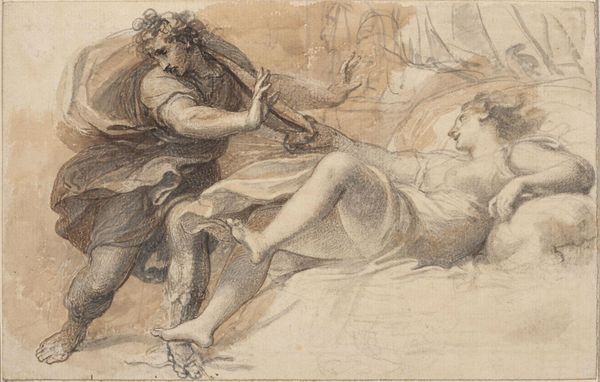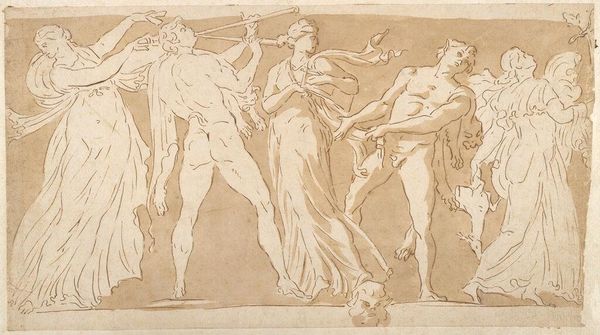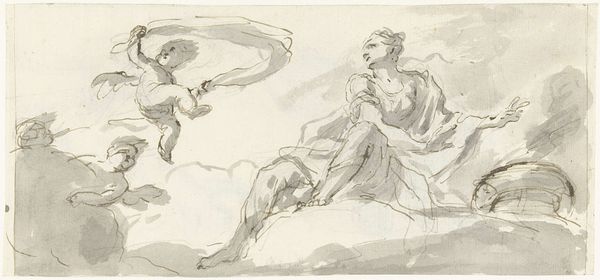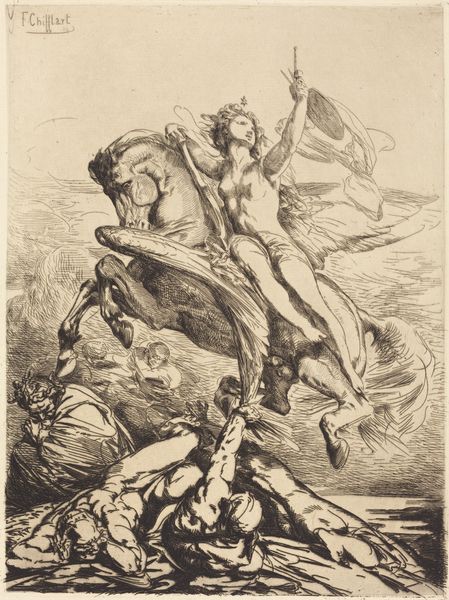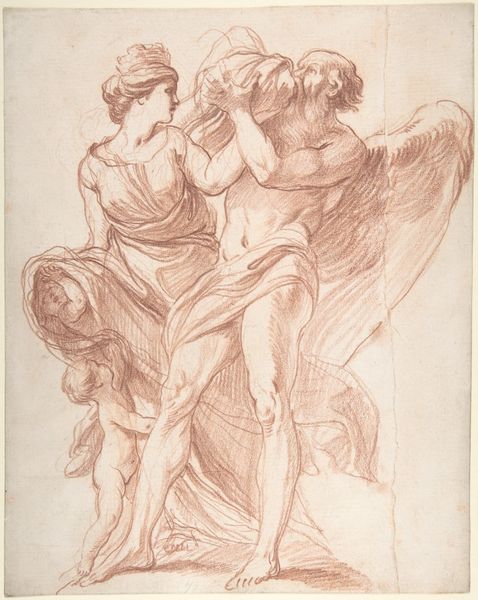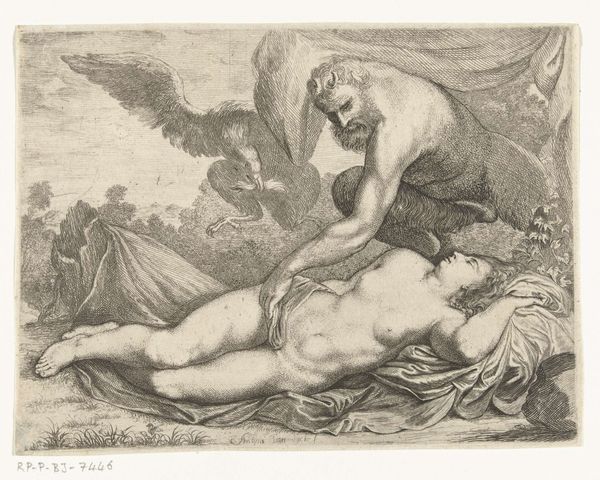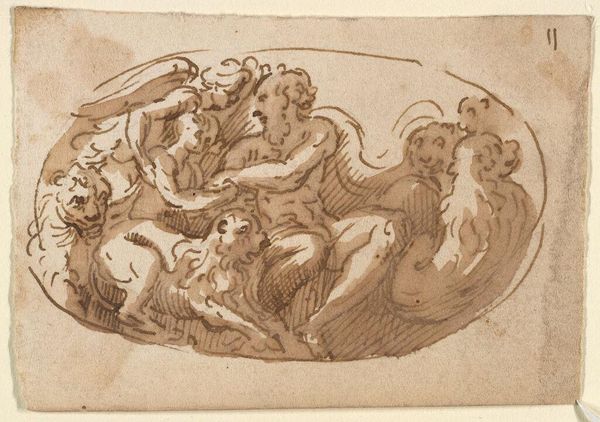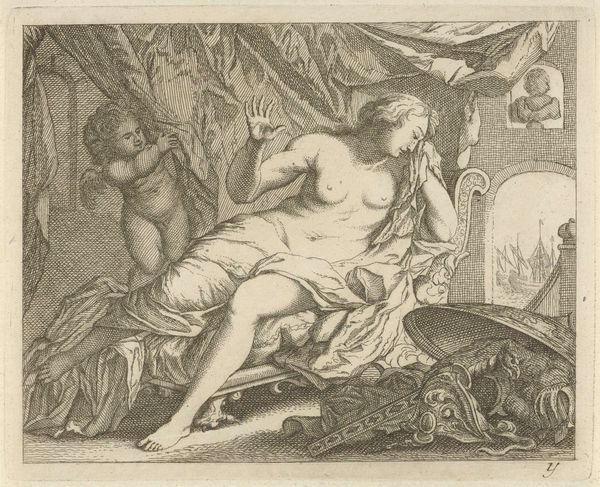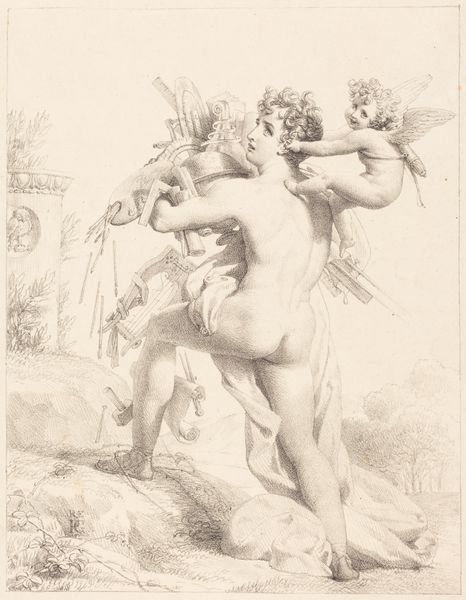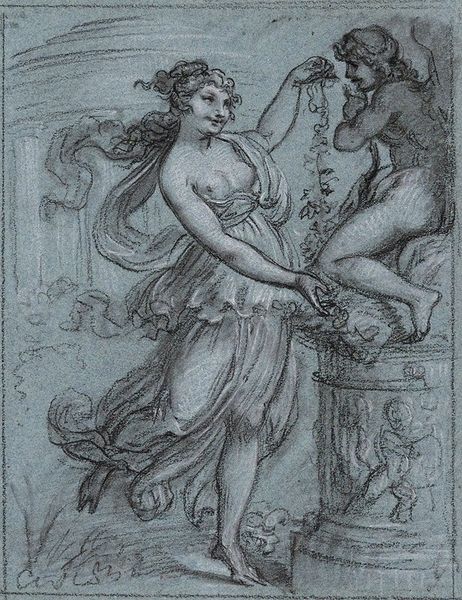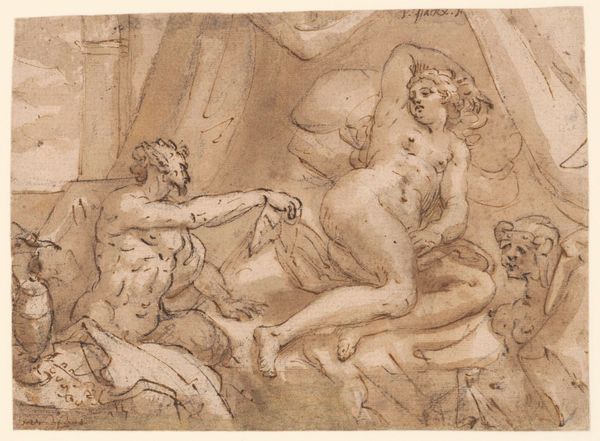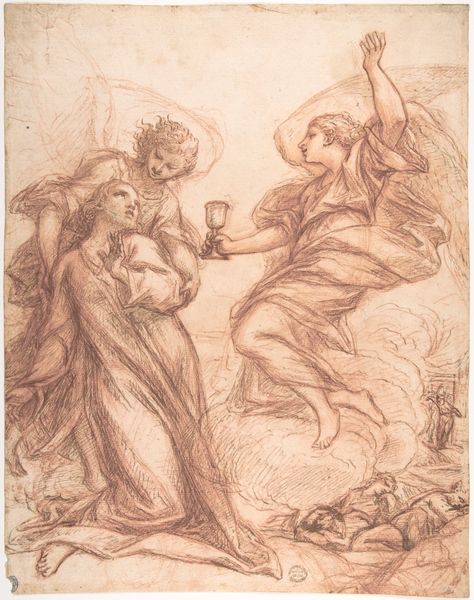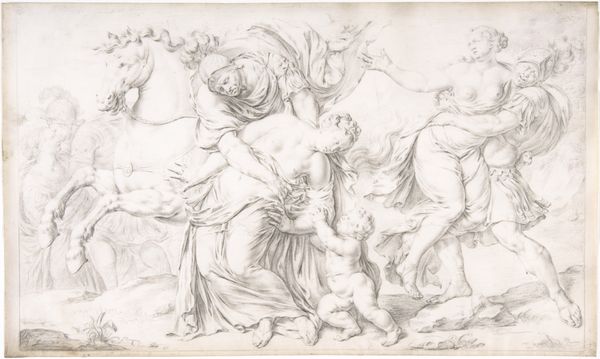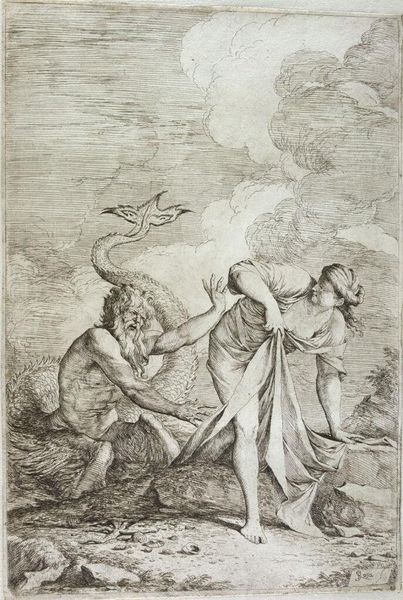
drawing, print, paper, ink, graphite, pen
#
drawing
#
narrative-art
# print
#
classical-realism
#
charcoal drawing
#
figuration
#
paper
#
ink
#
graphite
#
pen
#
history-painting
Dimensions: 195 × 265 mm
Copyright: Public Domain
Curator: This is "Rape of Deianira" by Giovanni Battista Cipriani. It's a drawing combining pen, ink, graphite, and charcoal on paper. Editor: The immediate impression is drama and movement. The composition throws the central figures forward, emphasizing the centaur's frenzied gallop and the woman's desperate gesture. It is difficult not to consider the socio-historical background of the term in the title, though. Curator: Exactly. The term "rape" held a different connotation, closer to "abduction." Cipriani was depicting a moment from classical mythology: the centaur Nessus attempting to carry off Deianira. Thinking about its creation as a drawing made for print production is important. It flattens tonal range but captures so much with line. Editor: Considering that reproductive role is helpful here, yes. How was Cipriani's workshop organized? Were particular studio hands responsible for translating original artworks into engravings? The division of labor and specific skillsets involved certainly impacts our understanding of the final print’s reception. How were images of "heroic" violence consumed and normalized at the time? Curator: That normalisation depended on visual language steeped in academic tradition, but consider also Cipriani's materials here: pen, ink, graphite. Each enables a certain texture and weight. Charcoal for darker tones, yes, but it also smudges, complicating the precise lines typical of academic drawing. It asks how rigid and policed those categories actually were in the artist's studio. Editor: True, but to a contemporary audience, there’s unavoidable tension between the classical idealism of the scene and the discomfort evoked by the subject matter. The historical context informs our viewing, certainly. But does it excuse it? Does the print's availability democratize or normalize it? We have to consider how the marketplace shapes taste. Curator: And tastes influence artistic production! Cipriani worked for wealthy patrons deeply invested in controlling culture and defining what 'good art' looked like, which in turn reinforces a very specific notion of acceptable visual language. The labor and patronage underpinning this type of art making absolutely shaped not only the artwork itself, but the conditions for viewing it at all. Editor: Absolutely. The artwork’s power resides both in Cipriani’s artistic choices and in the complex web of socio-political and historical forces that framed its creation and reception. It challenges us to look critically at the normalization of violence and power structures within classical narratives. Curator: A potent reminder that our interpretations must grapple with artistic means, as well as cultural baggage that comes along with historical imagery.
Comments
No comments
Be the first to comment and join the conversation on the ultimate creative platform.
